5 Tips For Creating Effective Multi-Location Business Signage
For Salt Lake area companies with multiple locations, business signage is more than just a way to stake your claim. It’s a critical tool for building brand recognition, directing customers and creating a cohesive company image across different sites.
Many multi-location businesses struggle with maintaining consistent branding while adapting to the unique needs of each location. The right signage strategy solves this problem and delivers measurable ROI on your investment.
We’ve got five practical things to consider when developing signage for your locations, so you can make smart decisions about materials, placement, readability, implementation and tracking results.
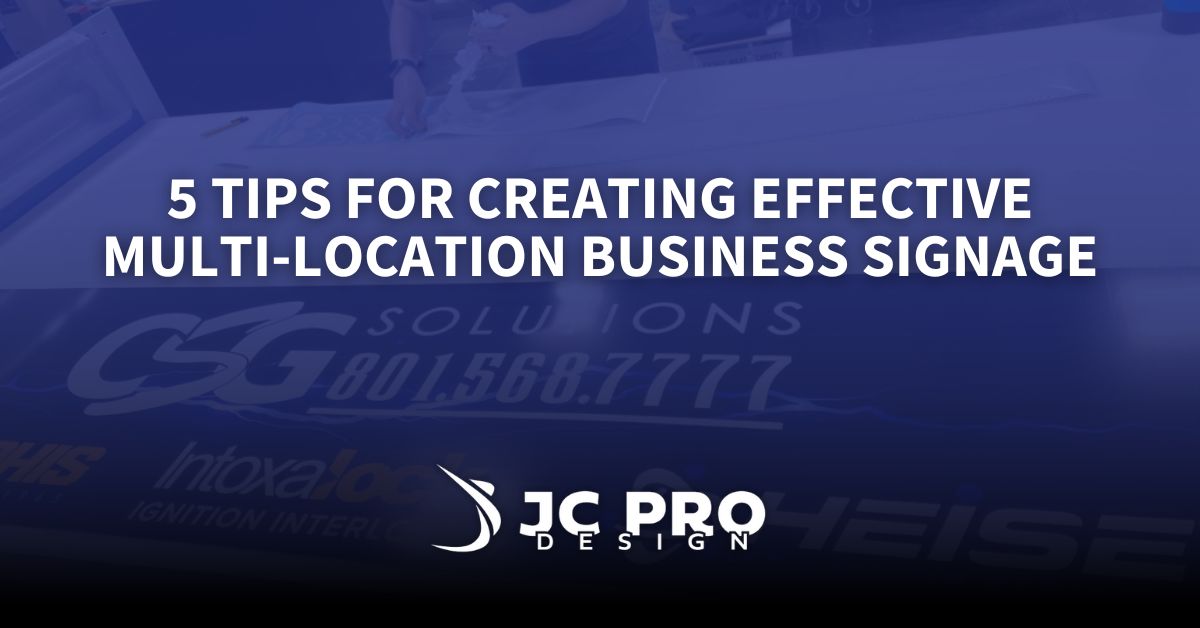
1: Choose the Right Type of Sign
The materials you choose directly impact the effectiveness, durability and overall cost of your sign. Making smart choices here sets the foundation for a sign that will perform over time.
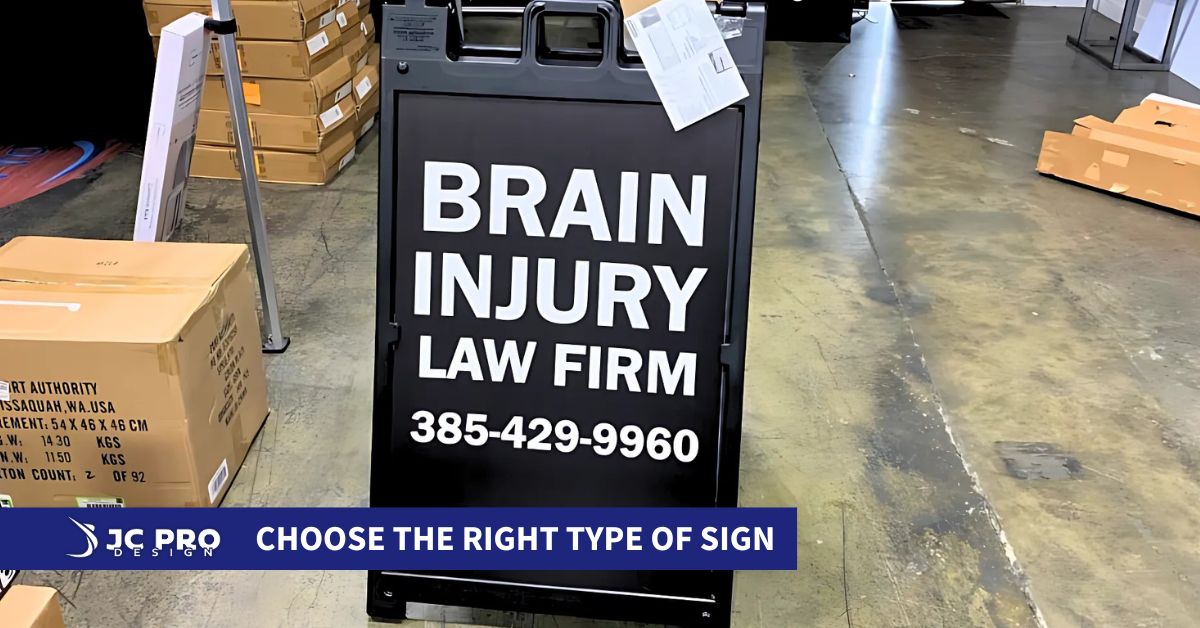
For Indoor Environments:
- Custom business banners are great for temporary promotions or events. Indoor hanging banners work well in large open spaces, while retractable banner stands are perfect for trade shows or rotating displays. These options allow for easy updates as your message changes.
- Acrylic vs foam board signs offer different benefits depending on your needs. Premium acrylic signs are great for those client facing areas like reception, while foam board is a cost effective solution for temporary information or directional signage.
- Tension fabric displays create seamless, wrinkle free graphic walls that can transform any indoor space. These lightweight displays pack down small for easy transport between locations – perfect for companies hosting events at different sites.
For Outdoor Applications:
- Weather resistant vinyl banners with proper hemming and grommets can withstand wind, rain and sun exposure. Adding reinforced edges prevents fraying and extends life, making them great for announcing new locations or seasonal promotions.
- Custom metal business signs provide maximum durability for permanent outdoor installations. Aluminum signage resists rust and corrosion, maintains your brand’s professional image in all weather conditions without frequent replacement.
When comparing costs, remember to factor in the total lifetime value. A slightly higher upfront investment in quality materials often delivers better long term results than replacing cheaper options multiple times.
2: Determine Sign Placement
Even the best designed sign fails if placed where your target audience can’t see it. Strategic placement maximizes visibility and impact at every location.
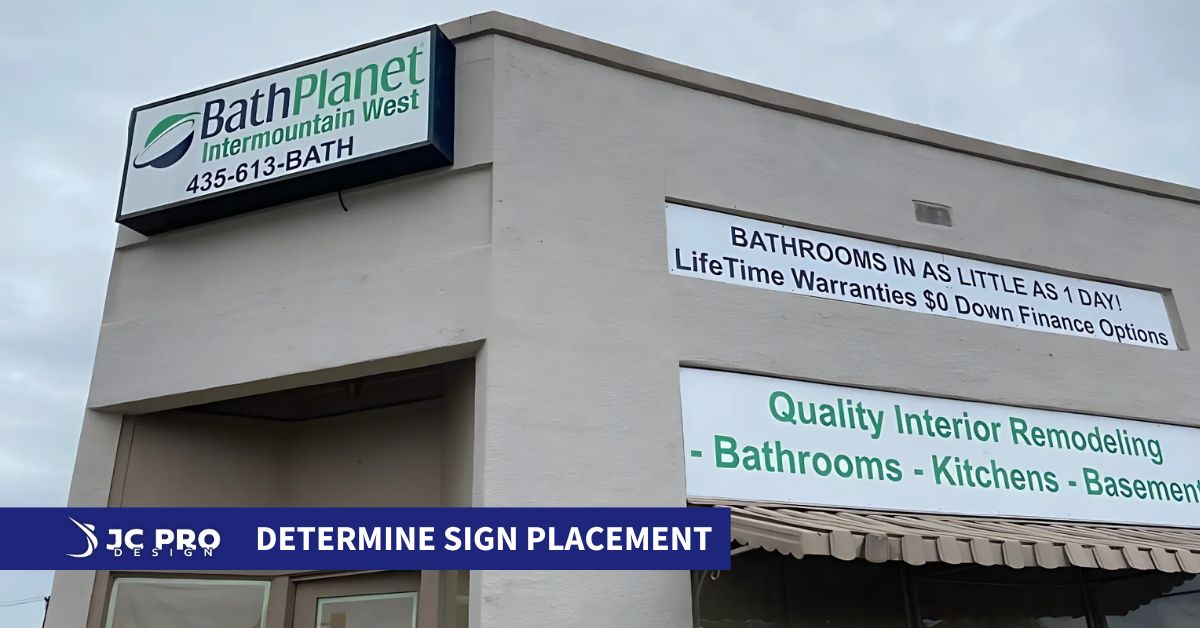
Indoor Placement Considerations:
- Eye-level placement is where attention naturally occurs. Place your most important messaging 5-6 feet from the floor where most adults will see it without looking up or down.
- Wayfinding signage should be at decision points – intersections, entrances and transitions between spaces. This reduces customer frustration and improves overall experience.
- Reception and lobby areas deserve special attention as they set the first impression. Wall mounted acrylic signs behind reception desks reinforce your brand identity from the moment visitors walk in.
Outdoor Placement Strategies:
- Vehicle sight lines determine roadside visibility. Signs should be visible for at least 3-5 seconds at typical driving speeds. This means larger signs for faster roads and higher placement for better visibility.
- Architectural integration means signage complements each location’s unique structure while maintaining brand standards. Work with the building features rather than against them.
- Local adaptation balances consistency with practical needs. While maintaining core brand elements, adjust size, height and lighting based on each location’s surroundings and local regulations.
Signage can have a big impact. In fact a survey from The Sign Research Foundation found that signs can increase in-store traffic, as 20% of customers say they’d walk into a small business based on well designed signage.
3: Make Signs Easy to Read
Readability determines if your investment in signage actually communicates your message.
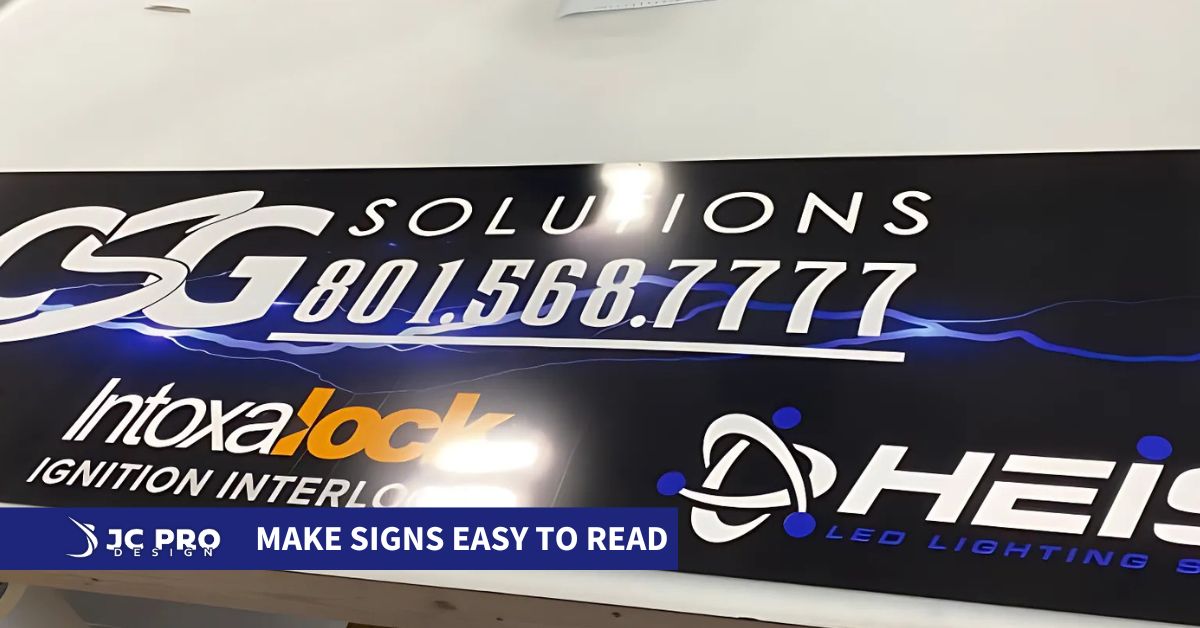
Lighting Makes a Difference:
- Backlit displays in reception areas and conference rooms create a premium look while ensuring your brand is visible in any lighting condition.
- LED integration offers energy efficient illumination that reduces operational costs while providing consistent brightness. Modern LED systems can run for up to 100,000 hours before needing replacement.
Outdoor Visibility Solutions:
- Channel letters with LED illumination provide 24/7 brand visibility with low energy consumption. They look professional and stand out in competitive retail environments.
- Light timing systems can adjust brightness based on ambient conditions or time of day, maximizing visibility when needed and reducing costs during off-hours.
The right lighting approach doesn’t just improve readability – it shapes how customers perceive your brand. Well lit, professional signage creates an impression of stability and success across all your locations.
4: Create a Multi-Location Signage Plan
Implementing signage across multiple locations in Salt Lake County requires planning to ensure consistency and control costs.
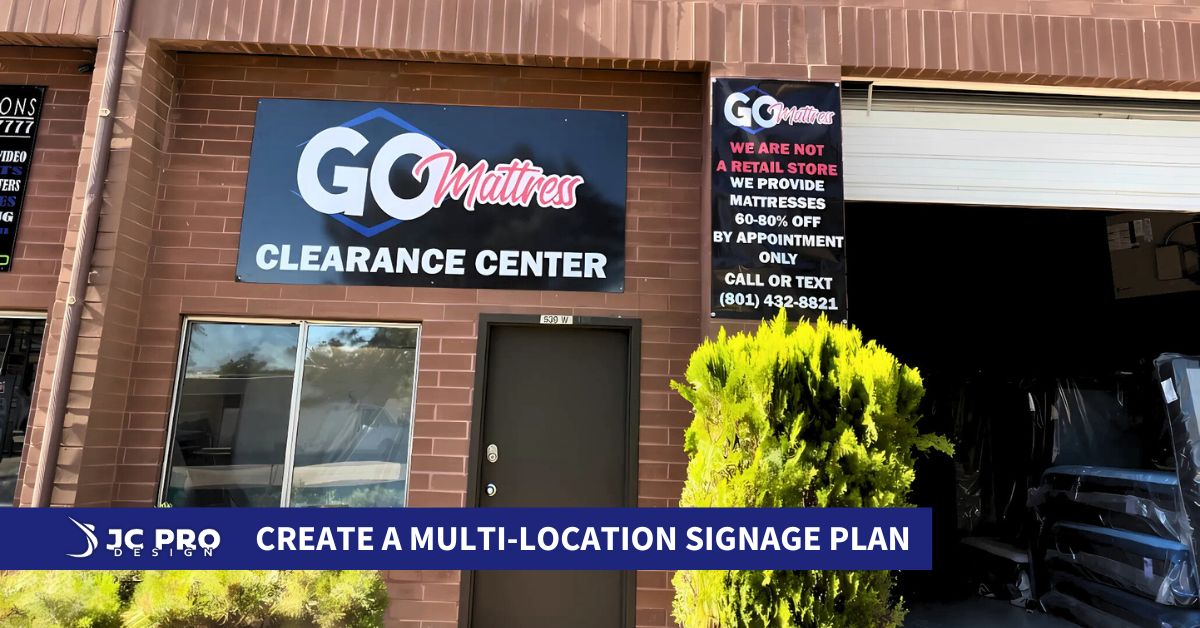
Working with one vendor for all locations has many benefits:
- Consistency of quality and appearance
- Simplified communication
- Volume pricing discounts
- Centralized project management
Signage standards documentation provides guidelines for current and future locations. This should include:
- Approved designs and templates
- Material specifications
- Size requirements
- Placement guidelines
- Lighting standards
I really like this example from The University of California – Davis Health, which can be downloaded as a PDF or printed for easy reference.
Centralized project management ensures consistency across locations while meeting timeline requirements. Phasing is often the best approach, so you can apply lessons from early installations to later ones.
Maintenance planning should be part of your initial strategy. Set up inspection schedules and replacement timelines based on material life and local conditions.
5: How to Measure the Effectiveness of Your Signage
Measuring the impact of your signage investment helps justify costs and identify areas for improvement.
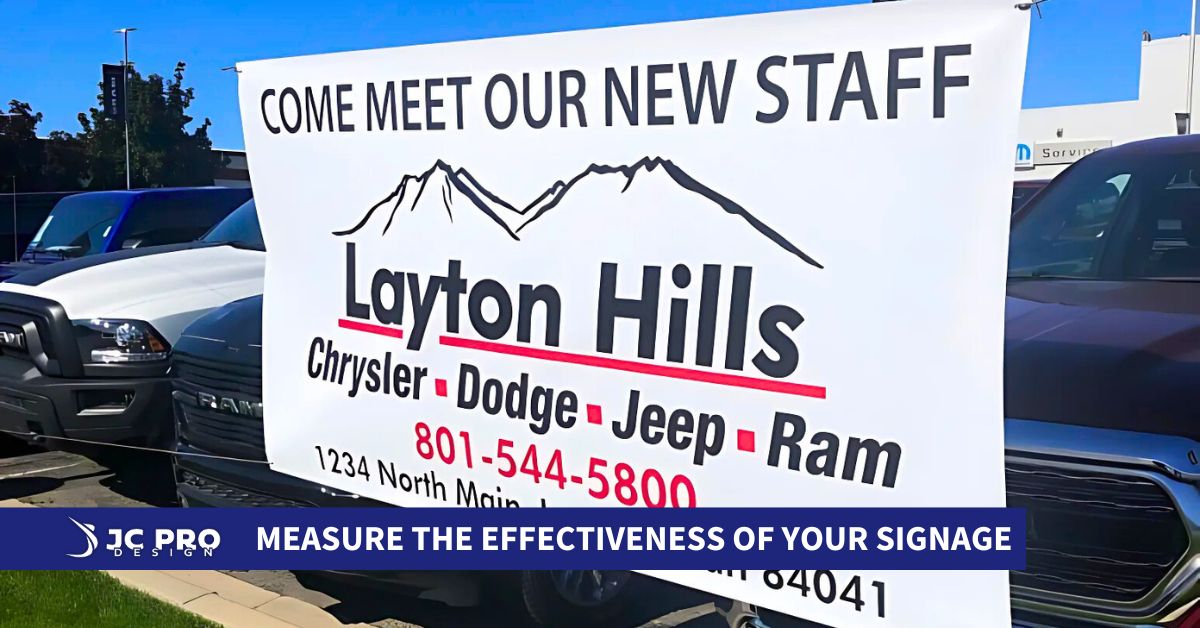
Practical measurement methods:
- Before-and-after foot traffic counts using door counters or security footage show direct evidence of increased customer interest.
- Brand recognition surveys in different markets reveal if your signage is building consistent awareness across locations.
- Employee feedback provides valuable insights into workplace signage effectiveness. Staff often notice when customers struggle to find information or navigate your space.
- Customer intercept surveys near your signage gather direct feedback on visibility and clarity. Simple questions like “How did you find us today?” can show how your signage contributed to customer acquisition.
Tracking these metrics allows you to refine your signage strategy over time and direct resources where they’ll have the most impact.
Ready to Improve Your Business Signage?
Multi-location signage doesn’t have to be complicated. By focusing on the right materials, strategic placement, readability, cohesive planning and measurement, you can build a signage program that strengthens your brand and delivers real results.
JC Pro Design offers free signage audits for multi-location businesses in the Salt Lake City area looking to improve their visual presence. Our team will assess your current signage, identify opportunities for improvement and create a customized plan to meet your needs and budget.
Contact us today for a quote on your multi-location signage package and get started on a more cohesive, effective visual brand!

